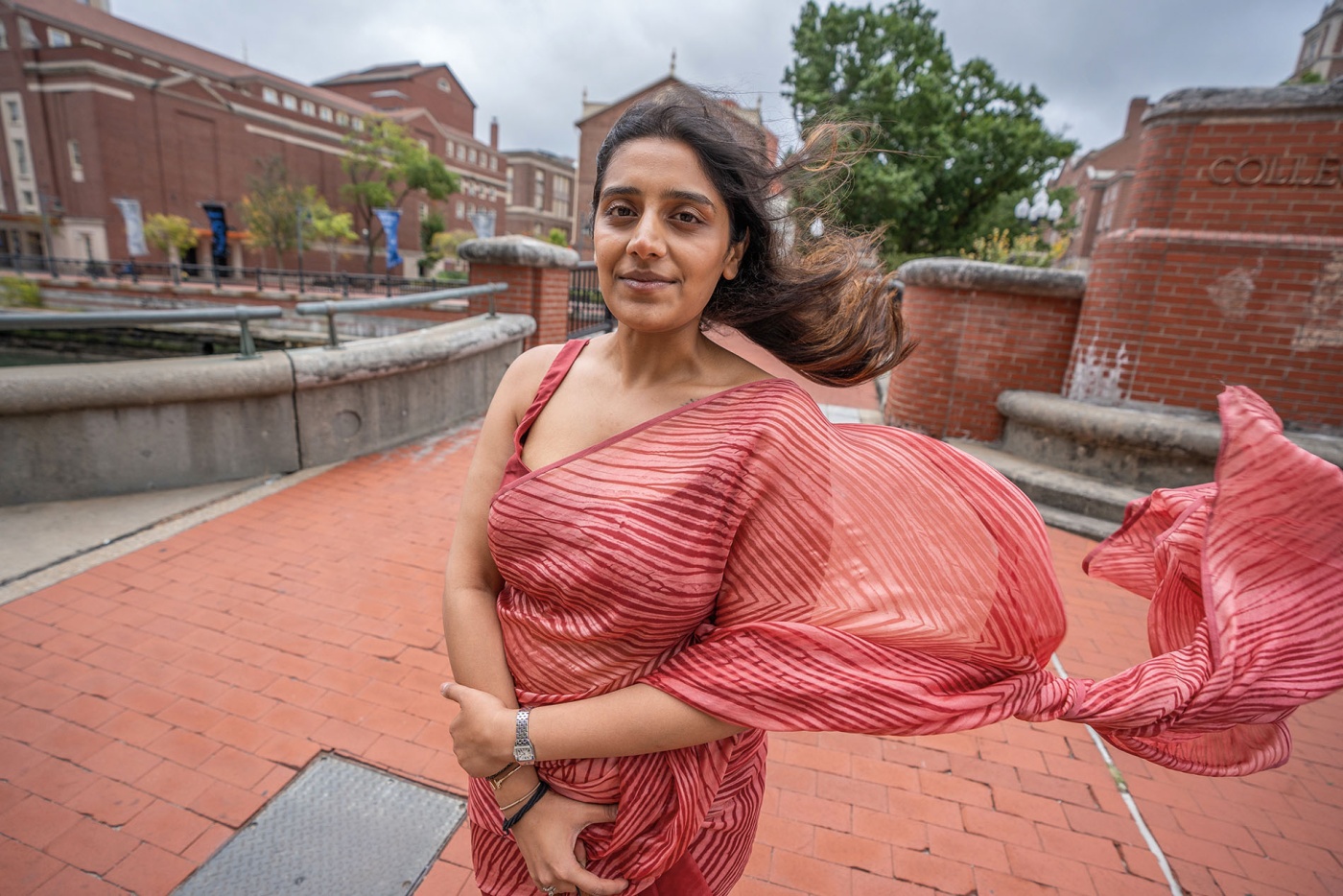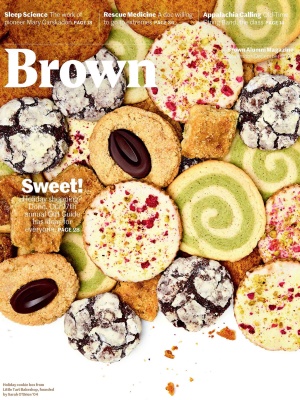Born at Brown and RISD, desi-gned is New England’s first publication for the South Asian diaspora.
Months after the initial roll-out of her magazine, then editor-in chief Yukti Agarwal ’25 received an unexpected email. It was from a designer from India, who found the publication while scrolling through Facebook Marketplace. Having created the magazine to tell the stories of the South Asian diaspora in New England, Agarwal wasn’t expecting it to end up in the hands of a stranger abroad. “It’s funny how life works, isn’t it?” the stranger remarked, “A book meant to bridge communities found a way to weave its own little narrative of connection and discovery.”
It was a long road from the magazine’s inception to its arrival in India. In 2021, Siddharth Thuppil, then a junior at RISD who had worked on reviving the Brown/RISD South Asian Students’ Association, came up with the initial seeds of desi-gned. He started with the term desi, which comes from the Sanskrit word desa, meaning land or country, and which he describes as an “ethnonym of the people, cultures, and products of the Indian subcontinent and their diaspora.” Although there were spaces for South Asian students to meet across the campuses, Thuppil noticed there were few opportunities for South Asian students to share their stories with the broader community. He and Agar-wal began to write essays and sketch out a plan for New England’s first publication for people from the South Asian diaspora.
After Thuppil graduated, Agarwal found herself in charge. Assembling a team of editors and designers, she began to plan the publication in earnest. In 2023, after two years and two months of drafting, editing, and fundraising, the group hosted a launch party at the RISD Museum—the first issue of desi-gned was in print.
It focuses on telling untold stories through diverse essays. One is an exploration of the Paradesi Synagogue, which served a robust Jewish community in Kerala; another, an indictment of the fast fashion industry that exploits Bangladeshi garment workers. Also in the mix: cocktail recipes inspired by Sri Lanka and translations from the Nachiyar Thirumozhi, important poems in the Hindu tradition.
As its name suggests, the magazine has a strong focus on design and visual culture. Each essay is accompanied by vibrant illustrations or photographs. Images of floral jamawar textiles, multicolor naga jewelry, and Pakistani bas-reliefs bring South Asia to life in the reader’s hands. Desi-gned also features visual motifs that appear across sections, such as a symmetrical floral symbol that marries the southern kolam (rice flour mural) and Arabic jali (lattice-work design) as a unifying gesture toward the two subcultures.
In one spread, woven animals dance across the page in shades of green, red, and teal, illustrations taken from traditional bridal dhurries—rugs woven by young women for their future husbands. The accompanying essay reads the dhurrie as an inversion of the dowry tradition’s patriarchal connotations, not “a capitulation to male avarice, but a token of love and affection given from the bride to her groom.”
Agarwal and team passed the torch to new voices for the second issue, and the focus is shifting to contemporary South Asian culture. Speaking about her time as editor-in-chief, Agarwal feels great pride in the product she helped create: “It was a testament to our collective effort and a celebration of the South Asian diaspora—a gift to our community, by our community.”





